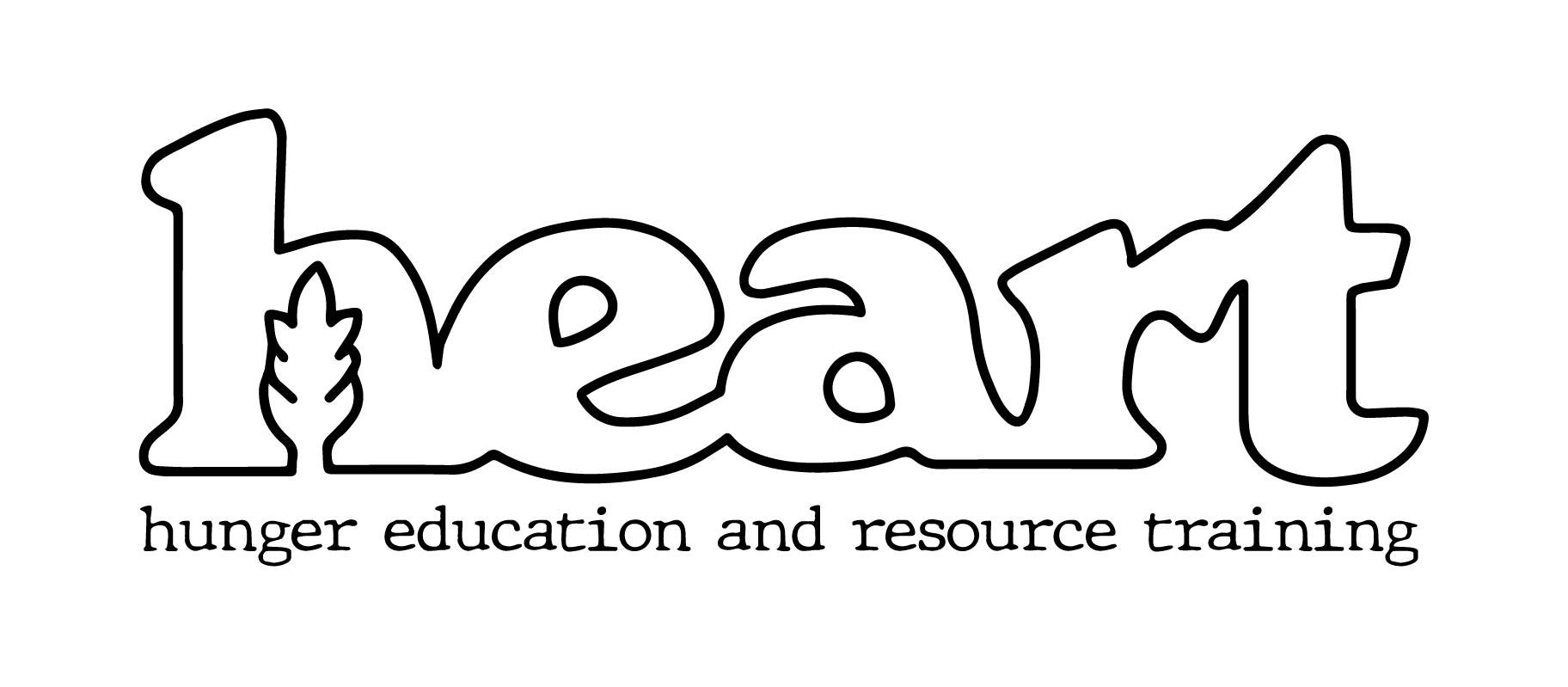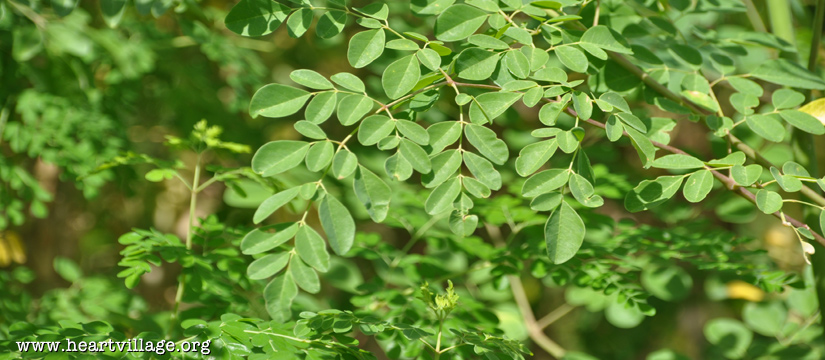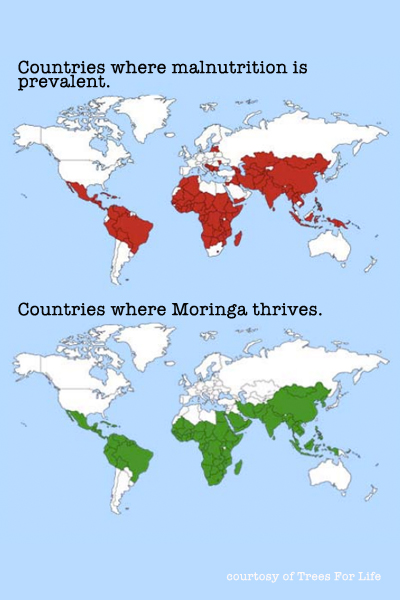Something unique about h.e.a.r.t. is that we grow and study plants that are superfoods. These plants have the nutritional density to supplement diets in ways that can change people’s health and change their lives. One specific plant that has the potential to battle malnutrition and hunger all over the globe is Moringa.
Moringa thrives in the tropics, and it has been utilized by organizations, institutions, and people all over the arid and tropical climates of the world in sustainable agriculture, community health, and community development.
The Moringa tree, specifically Moringa oleifera, is a plant native to India that is already known and used throughout the world due to its richness in nutrients, its tolerance to drought, and the general wellness it provides. Because of its usefulness in health, the growth and cultivation of Moringa can be used to benefit poorer communities everywhere by catering to the health needs of each population. It also thrives in tropical climates where malnutrition, hunger, and poverty are prevalent. ECHO, the Educational Concerns for Hunger Organization, has played a vital role in researching and using Moringa in the developing world.
Moringa functions as a food source that can provide imperative nutrients and can be used in the developing world to supplement diets and provide medicinal remedies. The Moringa tree is already used as an herbal supplement and a healing plant across the globe. Moringa is extremely nutritious—it contains more nutrients than most other fruits and vegetables—which makes it valuable for battling hunger and malnutrition.
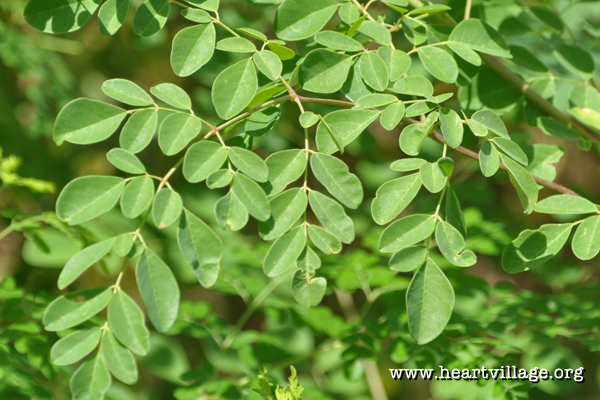
Moringa oleifera leaves are small but they pack a powerful nutritional punch.
The Moringa leaf alone contains twice the protein of yogurt, four times the calcium of milk, three times the potassium of bananas, four times the vitamin A of carrots, and seven times the vitamin C of oranges. These nutrients contribute to improvements in eyesight, overall growth and cognitive development, immune system development, the body’s healing process, stronger bones and teeth, nervous system development, heart health, muscle development and use, blood pressure regulation, as well as providing many other positive physical, mental, and emotional benefits. These health benefits have been seen in the organization Strong Harvest International and through their work in poorer areas. One of their key focuses is a Peer-to-Peer Educator Program in which they train local leaders in a developing area on the nutrition, cultivation, and use of Moringa.

Fresh moringa leaves were dried in h.e.a.r.t.’s solar dehydrator and then ground into a powder.
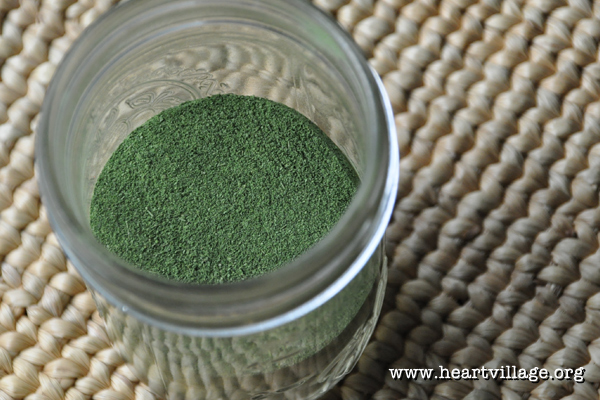
Moringa powder is a nutrient rich multivitamin. It can be added to prepared food for a nutritional boost.
The seedpods, flowers, seeds, oil, roots, leaves, and dried leaf powder are used in different ways in different foods, and the health benefits are in turn recognized by members of those communities. The pods, known in Indian culture as “drumsticks” are a traditional dish in India and are comparable to asparagus or green beans. The flowers are used to make tea and are high in calcium and potassium. Seeds can be eaten when they are still green like peas, or the mature seeds can be boiled in order to extract Moringa seed oil. The roots must be eaten cautiously, or avoided, because of harmful alkaloids in the root bark. Raw leaves are used similarly to spinach and are extremely rich in vitamin A, vitamin C, B vitamins, minerals, iron, and protein. Cooked leaves and leaf powder, however, have higher levels of iron and antioxidants than raw leaves. The possibility of consuming Moringa raw, cooked, or as a dried powder makes it a dynamic crop for farmers in poorer regions suffering from malnutrition, while the nutritional density and multiple usages of Moringa make it useful, beneficial, and practical for any community.
Moringa’s qualities make it a viable option for community development in poorer communities all over the world. Each part of the Moringa tree has a usage, and most parts have multiple uses that in turn provide for health-related needs in rural or urban communities.
Want to learn more about Moringa? Check out Garden Manager Josh Jamison’s video blog here or schedule a visit to h.e.a.r.t.!

Allison first became passionate about Moringa during her semester at h.e.a.r.t. when she studied and planted a plot of this incredible tree for her semester research project. Just four months later, the 5 inch seedlings that she planted are taller that she is.
